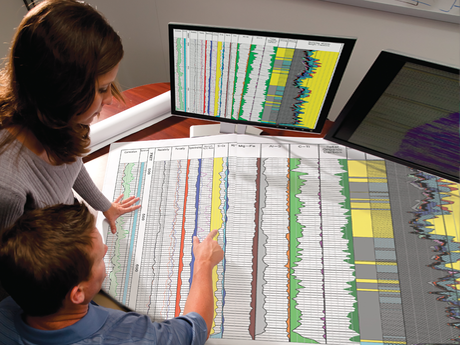Overview
Our Formation Lithology eXplorer™ (FLeX™) elemental spectroscopy wireline logging service reduces uncertainties when gathering in-situ mineralogical data. The Baker Hughes RockView™ interpretation system combines geochemical data measured by the FLeX and spectralog devices for accurate in-situ mineralogical characterization. It reduces uncertainties in petrophysical interpretations that don’t incorporate mineralogical data.
Improve petrophysical analysis in conventional reservoirs
In conventional reservoirs, the RockView service’s mineralogical results reduce uncertainties in characterizing clastic and carbonate reservoirs. Porosity determination is improved by directly calculating matrix density (ρma) and matrix compressional slowness (ΔTcma) from the minerals’ weight percentages.
Enhance reservoir characterization in unconventional reservoirs
Carbon may occur as part of the dry rock matrix or in the pores. RockView processing correctly allocates carbon to inorganic minerals like calcite, dolomite, or siderite. Any remaining carbon fraction is classified as “excess” carbon. Quantifying the amount of carbon and excess carbon from the inelastic gamma energy spectrum has important applications in unconventional reservoirs. We can quantify hydrocarbon-in-place in heavy-oil reservoirs and estimate total organic carbon (TOC)/kerogen in shale gas plays. We can also determine the productive quality or the rank of a coalbed methane reservoir.


